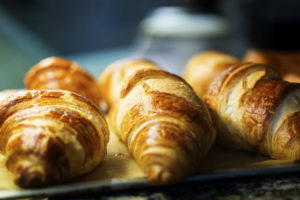If there’s one country that’s well known for its baked goods, it’s France. We’re talking tarts, opera cake, crepes, eclairs, crème puffs, Breton  cake and more pastries that you’d learn studying pastry at a Colorado culinary school. If there’s one pastry that shines above all the rest, it’s the croissant. And that’s just the beginning. Those sweet, flaky, buttery layers are synonymous with a type of French pastry known as Viennoiseries.
cake and more pastries that you’d learn studying pastry at a Colorado culinary school. If there’s one pastry that shines above all the rest, it’s the croissant. And that’s just the beginning. Those sweet, flaky, buttery layers are synonymous with a type of French pastry known as Viennoiseries.
The pastry style itself originated in Austria and was brought to France sometime in the mid-19th century but when French patisseries got their hands on the recipe, that’s when things got good. Now very much French, the Viennoiseries are what make France’s pastries well known around the world.
But what exactly does Viennoiseries mean? Well, it’s quite simple. In French, viennoiseries means “things of Vienna.” But that surely doesn’t take away from the fact that this style of pastry is all French. If you think of croissants and brioche and pain au chocolat and pain au amande, some of France’s most famous breakfast items, you think of all that is good and holy in pastry world. There’s no need to travel to Paris to get a good croissant. You can find them in bakeries and supermarkets around the world.
But making the viennoiseries is no easy feat. In order to achieve those layers upon layers of buttery goodness takes some serious skill, effort and time that can’t be imitated with a canned or frozen version. The base starts with a yeast leavened dough that’s risen to perfection. That’s when the good stuff happens. The dough is then layered with butter, rolled a number of times and, the best part, folded to create those gorgeous layers we’ve all come to know and love. That’s the same process that gives us all of the viennoiserie favorites.
From McDonald’s to Dunkin Donuts and everywhere in between, croissants have become a mainstream part of our culture in ways the original creator would never have imagined. And although they probably wouldn’t be OK with the pre-made, frozen kind that’s become popular with fast food, I’m sure they never thought their hard work would stretch so far and please so many.

